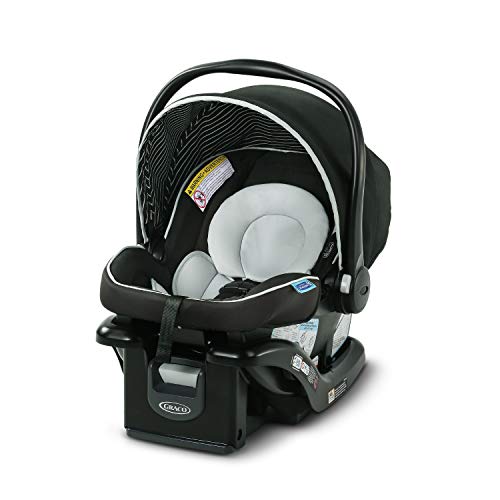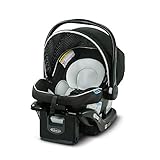As a parent, safety is always the top priority for your little one. And when it comes to traveling with your baby in a car, choosing the right car seat can make all the difference. With so many options on the market, it can be overwhelming to find the best fit for your child’s needs and your budget. That’s where Consumer Reports comes in – they’ve tested and reviewed countless baby car seats to help you make an informed decision. In this blog post, we’ll discuss everything you need to know about choosing the best baby car seat according to Consumer Reports’ recommendations. So buckle up and let’s dive in!
Top 10 Baby Car Seats
*Note: Score is based on our AI score (Editor’s choice and rating).
What Is Baby Seats?
Baby seats are specially designed car safety devices intended to keep infants and young children secure while they travel in a vehicle. They provide the necessary support, protection, and comfort for your child during car trips.
Most baby seats include three main components: a base that’s fastened securely to the back seat of your car using either LATCH anchors or seat belts; an adjustable harness system that holds your child safely in place; and a detachable carrier that can be easily removed from the base.
The American Academy of Pediatrics suggests keeping babies rear-facing until at least age 2 or as long as possible within their specific infant seat limits. Once your little one has outgrown their infant car seat, it is time to graduate them into convertible or booster seats based on weight and height guidelines provided by manufacturers.
It is crucial always to use baby seats correctly according to manufacturer instructions for maximum effectiveness. Additionally, never buy secondhand since you cannot guarantee its history nor know if it has been involved in accidents before.
How Does Baby Seats Work?
Baby seats are designed to protect infants and toddlers during car rides. They work by keeping the child restrained in a secure position, minimizing movement and potential injury in case of an accident or sudden stop.
Most baby seats have a base that is attached to the vehicle’s seat using either LATCH (Lower Anchors and Tethers for Children) or seat belts. The actual car seat can then be easily snapped onto this base. Some models also include additional safety features such as side-impact protection, anti-rebound bars, and energy-absorbing foam.
The harness system used in baby seats secures the child by wrapping around their shoulders and waist, holding them firmly against the backrest of the seat. These straps should be adjusted so they fit snugly but not too tightly against your little one’s body.
Rear-facing baby seats should always be placed at an angle so that your child’s head remains stable while driving over bumps or making turns. This helps prevent neck injuries from occurring.
It is important to remember that baby seats are only effective if they are installed properly following manufacturer instructions every time you use them. Additionally, it is recommended that parents never use second-hand car seats unless they know its history well enough since many factors can cause damage to its structural integrity over time – thus putting your kid’s life at risk during accidents on roadways
The Different Types of Baby Seats
When it comes to baby seats, there are several different types available in the market. Each type has its unique features and benefits that cater to specific needs and requirements.
One of the most common types is an infant car seat, which is designed for newborns up to 35 pounds. It faces backward and can be used as a carrier outside of the car. A convertible car seat is another popular option that can accommodate infants and toddlers ranging from 5-40 pounds or more. These seats can face either forward or backward depending on your child’s age.
A booster seat is specifically made for children who have outgrown their convertible seat but are not yet tall enough to use a regular seat belt safely. They raise your child up so that the vehicle’s safety belt fits them properly.
All-in-one seats offer a combination of rear-facing, forward-facing, and booster options in one product. This type of seat usually adjusts according to your child’s age and weight range.
It’s essential to consider the type of baby seat you need based on your child’s age, size, weight range before making any purchase decision.
Factors to Consider Before Buying Baby Seats
Before buying a baby seat, there are some essential factors you need to consider. Firstly, safety should be your top priority. Ensure the car seat has passed the safety standards set by the government and it is easy to install correctly. Secondly, pay attention to your child’s age, height, and weight when selecting a car seat. Each type of car seat has different limits on how long or heavy a child can use it.
Another factor that can’t go unnoticed is comfortability. A comfortable baby seat will ensure that your child enjoys their ride without any discomforts. Also, consider purchasing a baby seat with extra features such as adjustable headrests or recliners for added comfort.
Ease of cleaning is another crucial aspect since babies tend to spill food and drinks in their seats frequently. Look out for removable covers that are machine washable so that you don’t have to spend hours scrubbing off stains from the fabric.
Always check customer reviews before making any purchase decision regarding baby seats because they provide honest opinions about personal experiences with various brands and models of baby seats available in the market today
Benefits of Using Baby Seats
Using a baby seat can provide several benefits to both parents and their little ones. One of the biggest advantages is safety. A properly installed and correctly used car seat can significantly reduce the risk of injury or death in case of an accident.
Another benefit is convenience. Baby seats allow parents to transport their children safely without having to hold them throughout the entire journey. Additionally, many models are designed with features such as adjustable headrests and recline positions that make long trips much more comfortable for babies.
Baby seats also provide peace of mind for parents who may have concerns about their child’s behavior in the car. Whether it’s due to motion sickness or simply being fussy, a secure baby seat ensures that a child cannot roam around while driving, providing additional safety measures.
Furthermore, using baby seats encourages good habits from an early age which helps instill safe behaviors like buckling up when travelling by car later on life.
Investing in a high-quality baby seat offers numerous benefits including improved safety, comfort and peace of mind for both you and your little one during trips big or small!
The Pros and Cons of Baby Seats
Baby seats are essential for keeping little ones safe while traveling in a car. They provide crucial protection and comfort, but they also come with their own set of pros and cons.
One major advantage of baby seats is that they can significantly reduce the risk of injury or death in the event of an accident. The design ensures proper positioning and support for your child’s body, reducing the impact on sensitive areas like the head, neck, and spine.
Another benefit is that most baby seats come with adjustable features to accommodate your growing child. You can customize everything from straps to headrests as your little one outgrows each stage.
However, some parents find baby seats cumbersome and difficult to manage. Installing them properly requires time and effort, which may not be ideal when you’re already running late or dealing with a fussy baby.
Additionally, some babies simply dislike being restrained in a seat for extended periods – this can result in tantrums during long car rides or errands.
Despite these drawbacks, it’s important to remember that the benefits of using a baby seat far outweigh any inconvenience or discomfort caused by them. By following guidelines for use correctly- including installation tips- you can ensure maximum safety on every journey!
Tips For Setting Up Your Baby Seats
When it comes to setting up your baby’s car seat, there are a few tips that can make the process easier and safer for your child. Firstly, always read the instruction manual carefully before attempting to install the car seat. Each brand and model may have different installation instructions.
Secondly, ensure that you have properly secured the base of the car seat in place before attaching the actual seat. Use both hands to push down on the base as firmly as possible while pulling on any available straps or levers until you hear an audible click.
Thirdly, use a level gauge to check whether your baby’s car seat is at an appropriate angle. Most seats come with built-in level indicators but if yours doesn’t, purchase one separately.
Make sure all straps and buckles are adjusted correctly so that they fit snugly around your child without being too tight or loose. You should be able to slide two fingers under each strap at shoulder height when fastened correctly.
By following these simple tips when installing your baby’s car seats, you can ensure their safety during every ride!
FAQs
FAQs
Q: What age range is suitable for a baby car seat?
A: Baby car seats are designed to accommodate infants from birth up to around 2 years old, depending on the weight limit specified by the manufacturer. It’s important to choose a car seat that fits your child’s size and weight appropriately.
Q: Can I install a baby car seat in any type of vehicle?
A: Yes, most baby car seats can be installed in different types of vehicles as long as they meet the safety standards set by the National Highway Traffic Safety Administration (NHTSA). However, it’s always best to consult with your vehicle owner’s manual or seek professional installation assistance if you’re unsure about how to properly install your baby car seat.
Q: How do I know if my baby is comfortable in their car seat?
A: Your baby should be positioned correctly in their car seat with no slouching or leaning forward. The headrest should support their head and neck while allowing them enough space to breathe comfortably. Additionally, check for signs of discomfort such as fussiness or crying during rides.
Q: Is it safe to buy second-hand baby car seats?
A: It’s recommended not to buy second-hand infant or child safety seats from unknown sources because there could be damage not visible upon inspection after an accident. The NHTSA recommends purchasing new models since they keeping up-to-date with current industry and regulatory changes ensuring higher levels of protection against crashes.
Conclusion
To sum it up, choosing the best baby car seat is crucial for your child’s safety and comfort during travel. It is important to consider various factors such as the type of seat, age and weight limits, installation process, and more before making a purchase.
By referring to consumer reports and reviews of the best baby car seats on the market, you can make an informed decision that suits your needs and budget. Always remember to follow instructions carefully when setting up your baby car seat in order to ensure maximum safety.
Investing in a good quality baby car seat not only provides peace of mind but also ensures that your little one travels safely with you wherever you go. So take some time to research different options available in today’s market and choose wisely!
I’m Ella Andrews, owner of the website https://bestconsumerstips.com/
I give you valuable information about good products to help you choose the best product.











